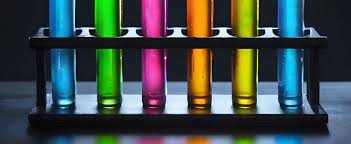If you are looking for high-quality products, please feel free to contact us and send an inquiry, email: brad@ihpa.net
Commonly utilized ingredients in plastic shade matching include dispersants, lubes, diffusion oils, combining representatives, compatibilizers, etc. Commonly come across material additives consist of flame resistants, strengthening agents, brighteners, UV preventions, antioxidants, anti-bacterial representatives, antistatic representatives, etc. One of the most typical ones are fillers for expense decrease or physical modification, such as light calcium carbonate, heavy calcium carbonate, talc, mica, kaolin, silica, titanium dioxide, red mud, fly ash, diatomaceous earth, wollastonite, glass grains, barium sulfate, calcium sulfate, etc, as well as organic fillers, such as timber flour, corn starch, and various other farming and forestry byproducts. Filling and enhancing materials consist of glass fiber, carbon fiber, asbestos fiber, artificial organic fiber, etc
Suppose the above ingredients are included in the product’s resources. In that case, they have to be added to the resin raw materials in the very same percentage in the color-matching proofing so as not to create a shade distinction in the subsequent manufacturing.
(Additives for Plastic Color Matching)
Dispersant
Dispersant types include fat polyurea, hydroxy stearate, polyurethane, oligomeric soap, and so on
At present, the typically used dispersant in the market is lube. Lubes have good dispersibility and can additionally enhance the fluidness and demolding performance of plastics throughout molding.
Lubricating substances are divided right into inner lubes and external lubes. Internal lubricating substances have a certain compatibility with materials, which can reduce the communication in between resin molecular chains, reduce melt thickness, and boost fluidness. Outside lubricants have bad compatibility with materials. They adhere to the surface of liquified materials to develop a lubricating molecular layer, thus minimizing the friction in between resins and processing equipment.
Lubricants
According to the chemical framework, they are primarily separated right into hydrocarbons, metal soaps, lubes that play a demolding duty, fatty acids, fatty acid amides, and esters.
Such as plastic bis ceramide (EBS)
EBS (Ethylene Bis Stearamide), likewise called vinyl bis stearamide, is an extremely efficient inner and exterior lubricant and dispersant extensively made use of in the plastic handling market. It is suitable for all thermoplastic and thermosetting plastics, consisting of yet not limited to polyethylene (PE), polypropylene (PP), polystyrene (PS), polycarbonate (COMPUTER), polyamide (PA), polyester (PET/PBT), polyurethane (PU), phenolic resin, epoxy material, and so on. Right here are some of the primary roles of EBS in these plastics:
(EBS Ethylene Bis Stearamide Emulsion)
Dispersion
As a dispersant, EBS can aid uniformly disperse fillers and pigments throughout plastic processing, avoid jumble, and enhance the diffusion and security of pigments and fillers. This helps improve the color uniformity and mechanical residential or commercial properties of the final product. For instance, in masterbatch manufacturing, EBS can make certain that pigment bits are equally distributed in the carrier material to ensure that regular color is shown in succeeding plastic products.
Interior lubrication
In the plastic melt, EBS can decrease the rubbing in between molecules and the shear stress of the plastic melt, thus reducing the melt thickness and making the thaw flow smoother. This helps reduce pressure during extrusion or shot molding, decreases processing temperatures, and shortens molding cycles, while additionally reducing energy consumption, improving processing efficiency, and boosting the life span of devices.
External lubrication
EBS develops a thin lubricating film on the plastic surface area, which can lower the rubbing between the plastic thaw and the steel mold, boost demolding efficiency, and prevent sticking of plastic items during molding. This not just assists to improve the surface coating of the product and lower flaws however also simplifies the post-processing process and enhances manufacturing performance.
Other features
In addition to the above primary features, EBS can also be made use of as an antistatic representative to boost the antistatic properties of plastic products and reduce issues such as dust adsorption caused by fixed electricity. In some applications, EBS can likewise boost the climate resistance and chemical resistance of plastic items.
In the shot molding process, when dry coloring is utilized, surface area treatment agents such as white mineral oil and diffusion oil are generally included throughout mixing to play the duty of adsorption, lubrication, diffusion, and demolding. When readjusting the shade, it must additionally be included in the raw materials in proportion. Initially, add the surface therapy representative and drink well, after that include the color powder and shake well.
When picking, the temperature level resistance of the dispersant should be established according to the molding temperature level of the plastic basic material. From a price viewpoint, in concept, if a tool and low-temperature dispersant can be utilized, a high-temperature immune one ought to not be selected. High-temperature dispersants require to be immune to more than 250 ° C.
Supplier of EBS Ethylene Bis Stearamide Solution
TRUNNANO is a supplier of 3D Printing Materials with over 12 years experience in nano-building energy conservation and nanotechnology development. It accepts payment via Credit Card, T/T, West Union and Paypal. Trunnano will ship the goods to customers overseas through FedEx, DHL, by air, or by sea. If you want to know more about MoDTP, please feel free to contact us and send an inquiry.
Inquiry us







